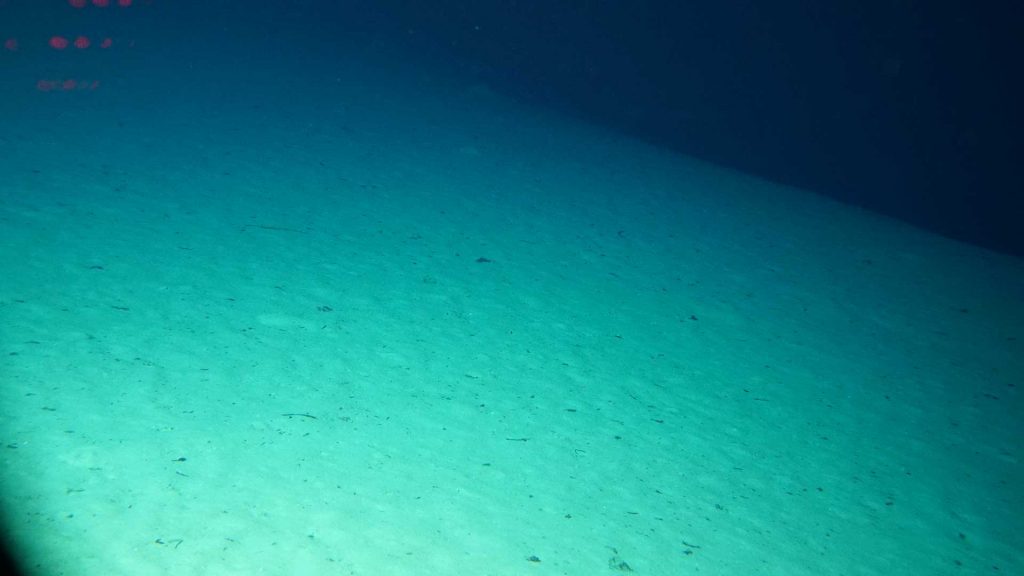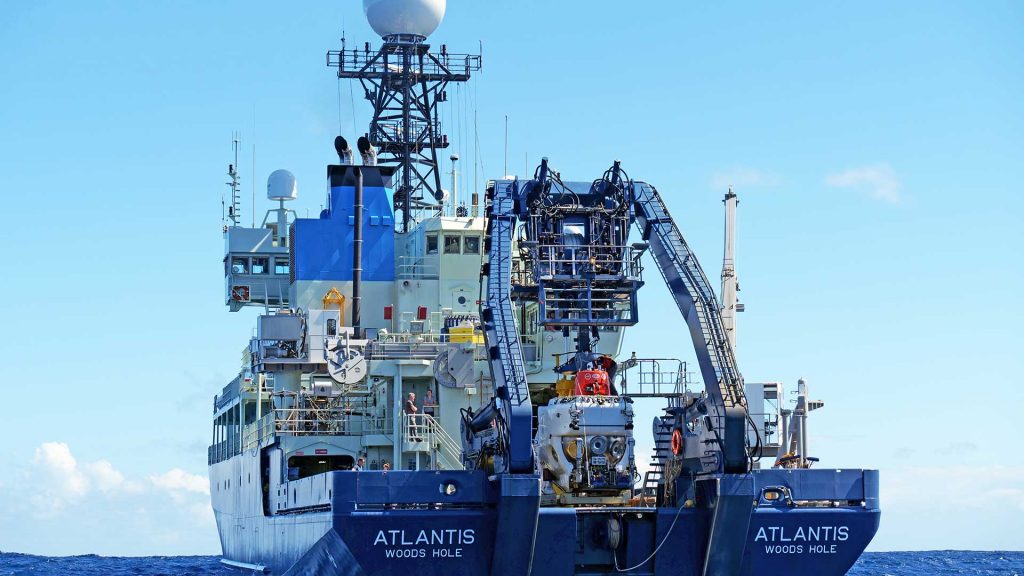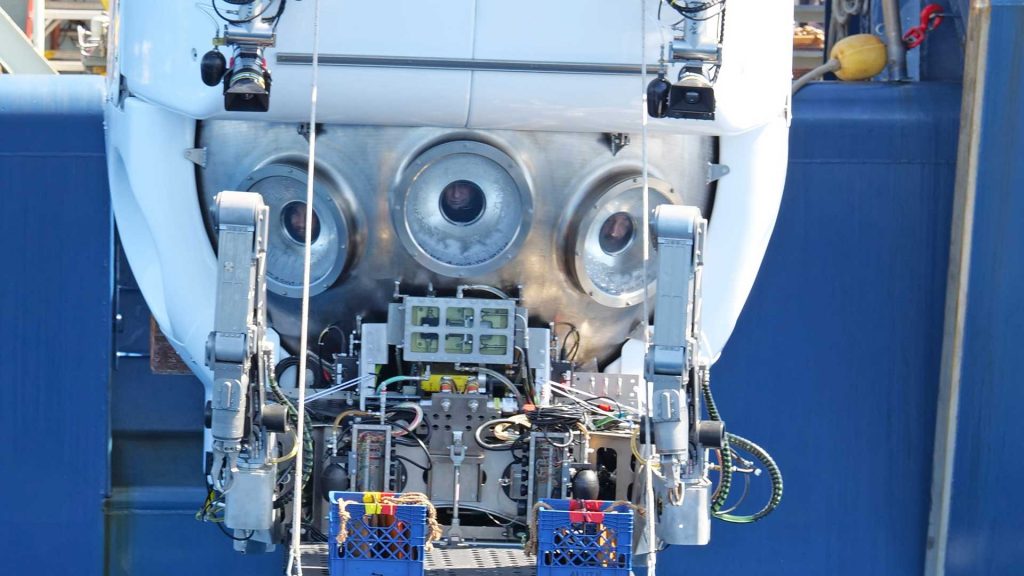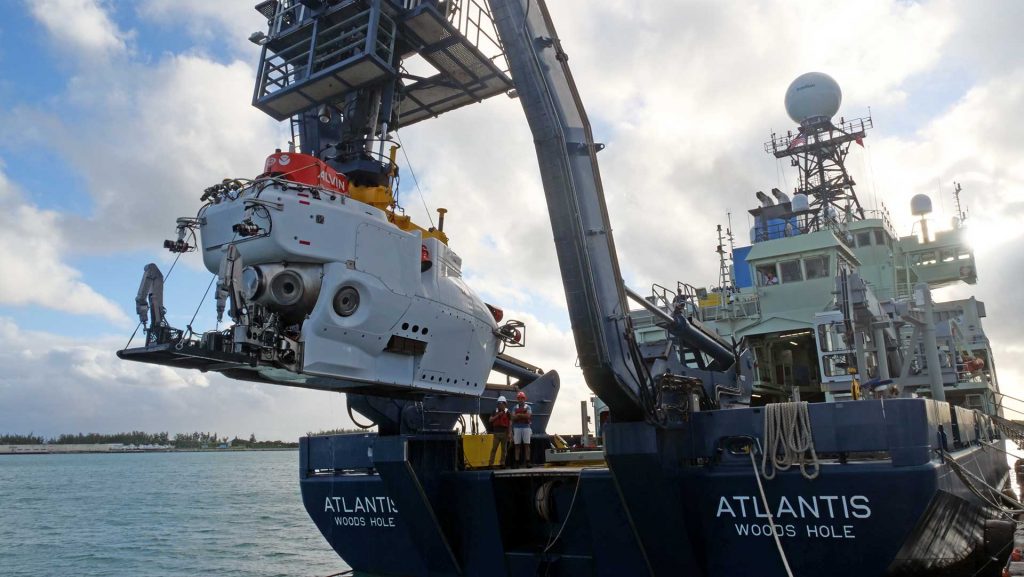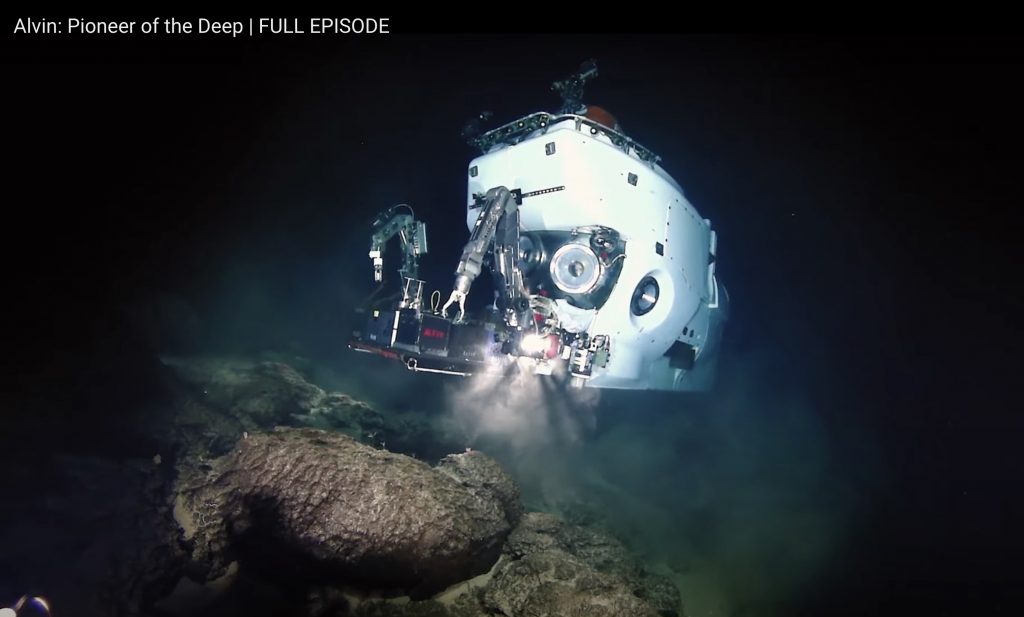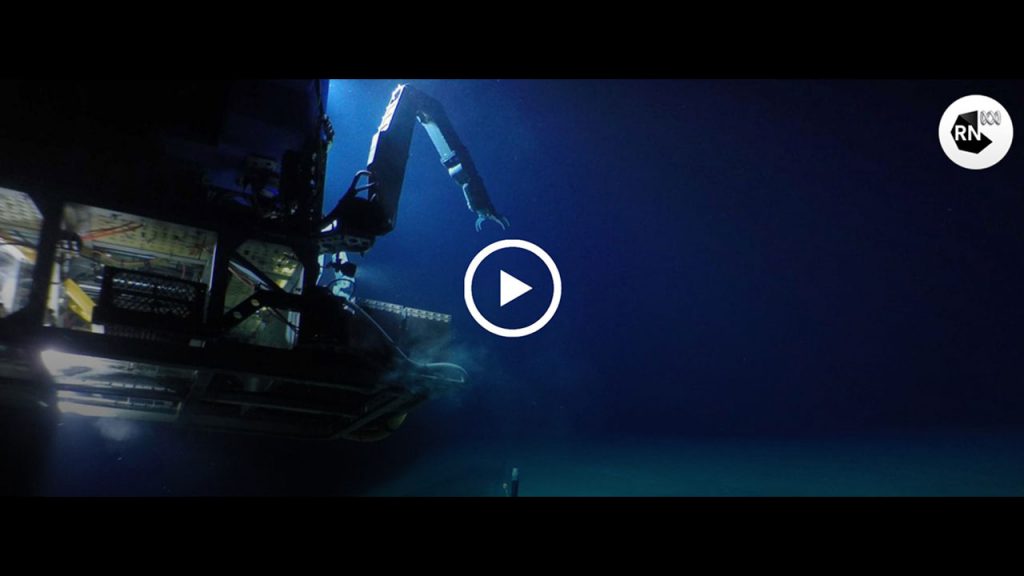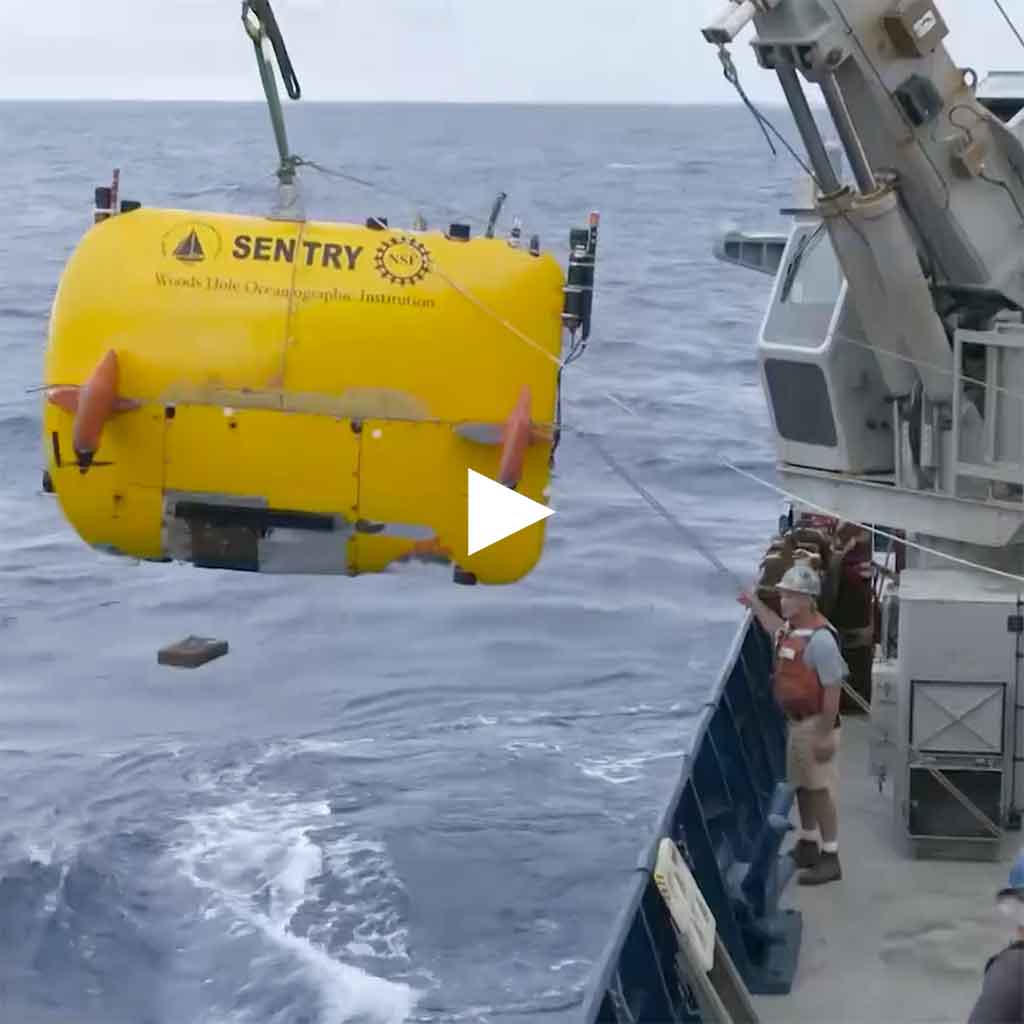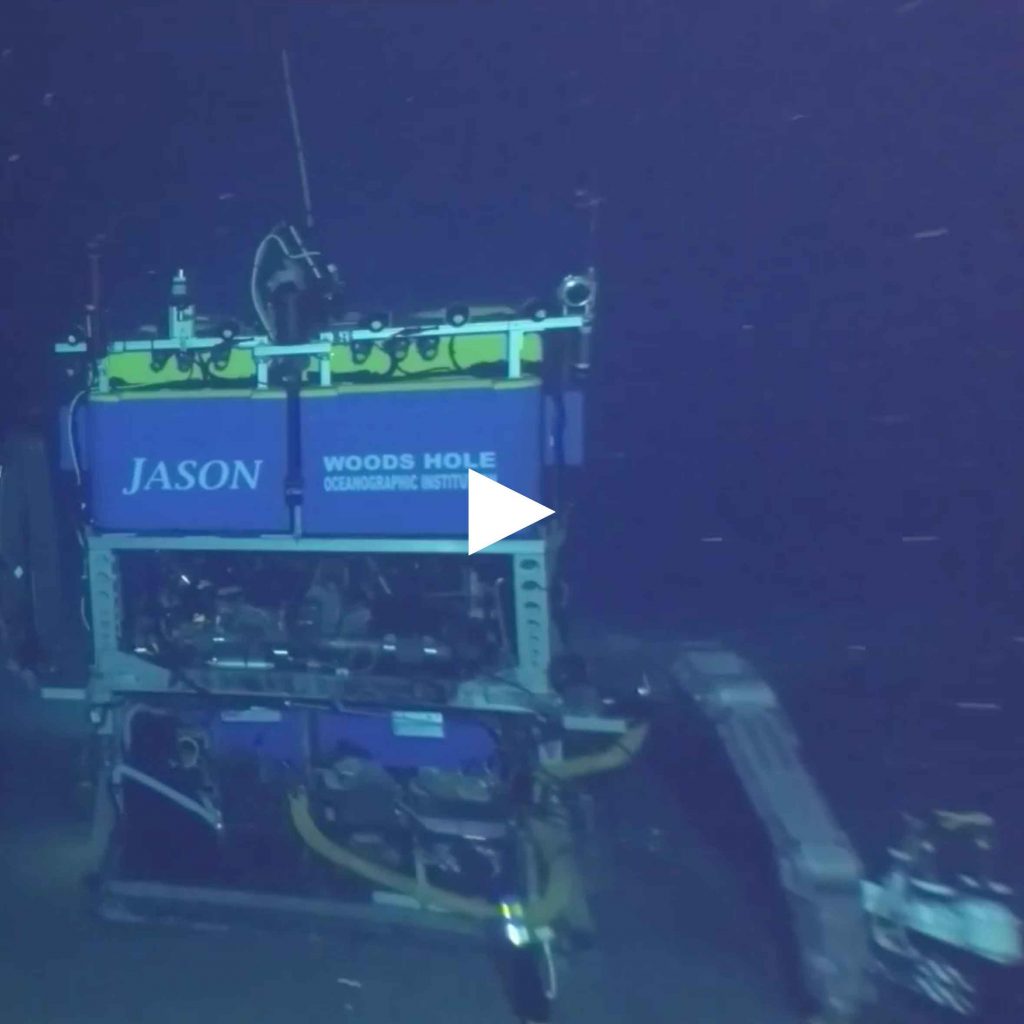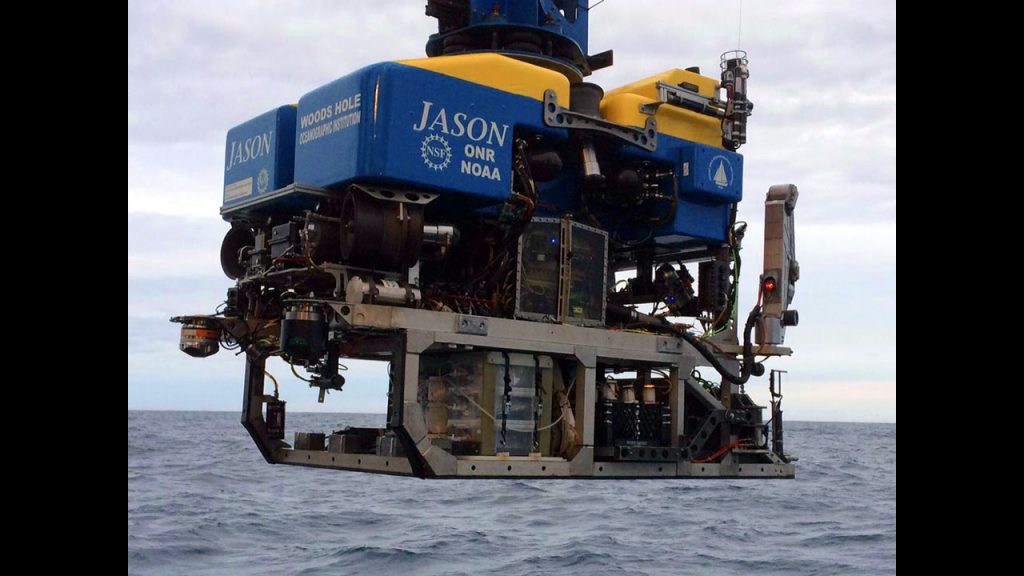Posts by Ken Kostel
We interrupt this blog
It may seem uninteresting, but this is what most of the surface of the planet looks like. (Photo by Ken Kostel, ©Woods Hole Oceanographic Institution) Even after nearly 30 years, the view out the sub’s porthole never gets old for chief Alvin pilot Bruce Strickrott. (Photo by Ken Kostel, ©Woods Hole Oceanographic Institution) A moment…
Read MoreHOV Alvin temporarily halts engineering test dives
After completing its 5,075th dive to a record 5338 meters (17,513 feet), post-dive visual inspection of Alvin revealed unexpected damage to several attachment points of the specialized syntactic foam used to provide buoyancy to the 43,000-pound human-occupied research submersible. As a result, further test dives have been postponed so that the sub can be thoroughly…
Read MoreDiving to Mona Canyon
From left to right, NAVSEA observer Mike Yankaskas, Alvin pilot Mike Skowronski, and Alvin Operations Coordinator Anthony Tarantino ride the sub out on the ship’s A-fram and into the water to begin Dive 5074. (Photo by Ken Kostel, ©Woods Hole Oceanographic Institution) Free of the ship, Alvin’s pilot still has a lot to do to…
Read MoreBack in the water
Alvin began its road back to diving with a test of its buoyancy.
Read MoreAlvin: Pioneer of the Deep
A co-production of WHOI and WPBT2/South Florida PBS in Miami, this episode of the award-winning program Changing Seas takes a close-up look at Alvin and the extraordinary places it has taken researchers for more than 50 years. Now, Alvin is poised to continue its revolutionary scientific work with a new set of upgrades that will…
Read MoreSubmersibles Take Scientists to Deep Sea Volcanic Sites
Dr. Rebecca Carey from the University of Tasmania describes what she saw when 1000m beneath the surface at the Lōihi Seamount in Hawaii in this audio program on Australia’s ABC RN.
Read MoreHOV Alvin Featured on NSF Science 360
Take a look at HOV Alvin. Owned by the U.S. Navy, operated by the Woods Hole Oceanographic Institution (WHOI) and supported by the National Science Foundation (NSF), Alvin is the world’s preeminent deep-diving submersible. With submersibles like Alvin, NSF will continue to discover and understand the secrets of the deep!
Read MoreAUV Sentry Featured on NSF Science 360
Take a peek at Sentry, Woods Hole Oceanographic Institution’s state-of-the-art autonomous underwater vehicle. Supported by the National Science Foundation, it’s capable of exploring the ocean and seafloor to depths of 19,000 feet while untethered.
Read MoreROV Jason Featured on NSF Science 360
Learn about Jason‘s capabilities and work in support of ocean science research in this short video brought to you by the National Science Foundation.
Read MoreScientists Head to Sea to Explore Subseafloor Life
Earth’s largest aquifer flows beneath the seafloor, through the rocky upper layer of ocean crust. Together with the sediment that rains down from the ocean above, this vast system is called the marine deep biosphere. It covers the entire seafloor – 70 percent of the planet’s surface. This extreme environment is home to unusual, slow-growing…
Read More
